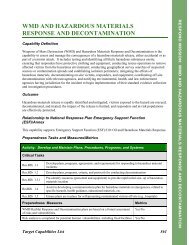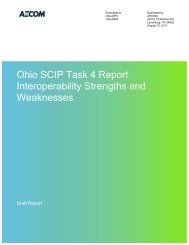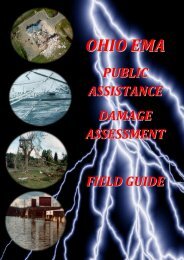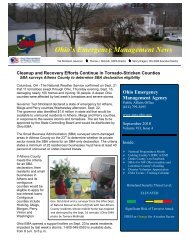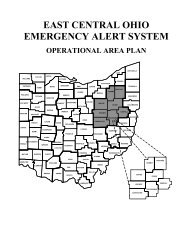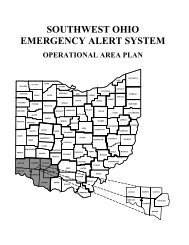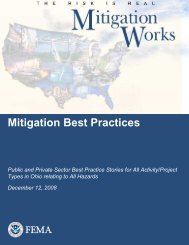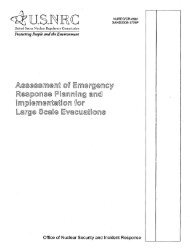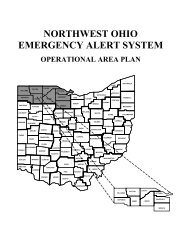SOUTHEAST OHIO EMERGENCY ALERT SYSTEM
SOUTHEAST OHIO EMERGENCY ALERT SYSTEM
SOUTHEAST OHIO EMERGENCY ALERT SYSTEM
You also want an ePaper? Increase the reach of your titles
YUMPU automatically turns print PDFs into web optimized ePapers that Google loves.
LP-3 (Local Primary 3) = In Ohio several stations serve as relay stations to deliver station<br />
emergency announcements to LP-1 and LP-2 stations throughout the state. LP-3 stations also<br />
serve as monitoring points for stations that cannot pickup a signal from an LP-1 or LP-2.<br />
PN (Participating National) = Most broadcasters and cable operators are designated as PN. They<br />
monitor the area LP stations and deliver EAS alerts directly to the general public.<br />
NN (Non-participating National) = Broadcasters who hold an “NN Authorization” from the FCC<br />
are required to sign off during a national EAS activation. There are very few of these in Ohio.<br />
IV. <strong>OHIO</strong> EAS CONFIGURATION<br />
The Ohio EAS is a fully automated system allowing notifiers through dedicated encoders<br />
to selectively provide Ohio citizens with timely emergency information and warnings.<br />
This Operational Area Plan outlines general guidelines for EAS configuration, activation<br />
and use. Notifiers must have EAS encoder equipment to activate the EAS. Notifiers without<br />
EAS equipment must activate the EAS through a notifier with the proper EAS encoder. LP<br />
stations serve as the primary contact point for EAS entry and therefore, carry an extra EAS<br />
responsibility. With this in mind, a key criterion for the selection of Ohio State Primary (SP)<br />
and Local Primary (LP) stations was their ability to provide 24-hour staffing.<br />
The process of selecting monitoring assignments in the Ohio EAS structure was based on<br />
station coverage areas with an emphasis on the ability to span state, local area and county<br />
boundaries. This focus provides Ohio with an approach for disseminating EAS messages over<br />
all stations with broadcast coverage serving an impacted area regardless of the physical location<br />
of the transmitter or cable head-end equipment. To achieve this capability, cross monitoring and<br />
multiple Local Primary (LP) monitoring assignments are required. While this monitoring<br />
3



